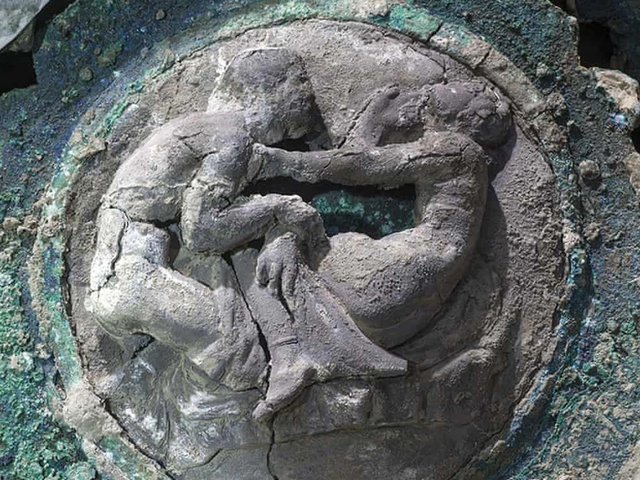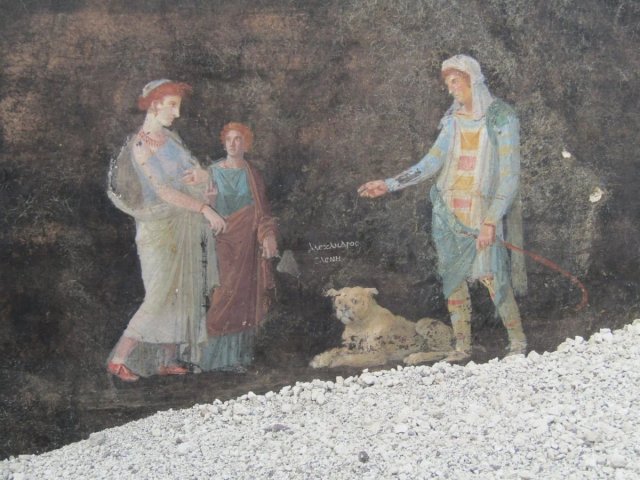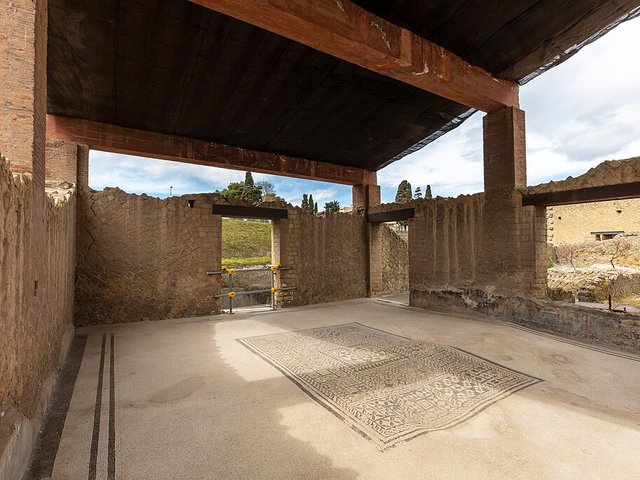Pompeii was resettled by former residents and settlers “with nothing to lose” after the eruption of Mount Vesuvius laid waste to the ancient town, new research suggests.
The theory of Pompeii’s resettlement has long been proposed, however archaeologists have confirmed during ongoing restoration and consolidation work in a southern district of the ancient town. There they discovered ovens, marble and ceramics, dated to after Vesuvius erupted in 79AD.
Inhabitants returned after the eruption to a grey and dusty wasteland, settling among the ruins of the upper floors of former homes poking above ash. Digging below, they accessed the homes’ lower floors, which became cellars and caves where hearths, ovens and mills were installed.
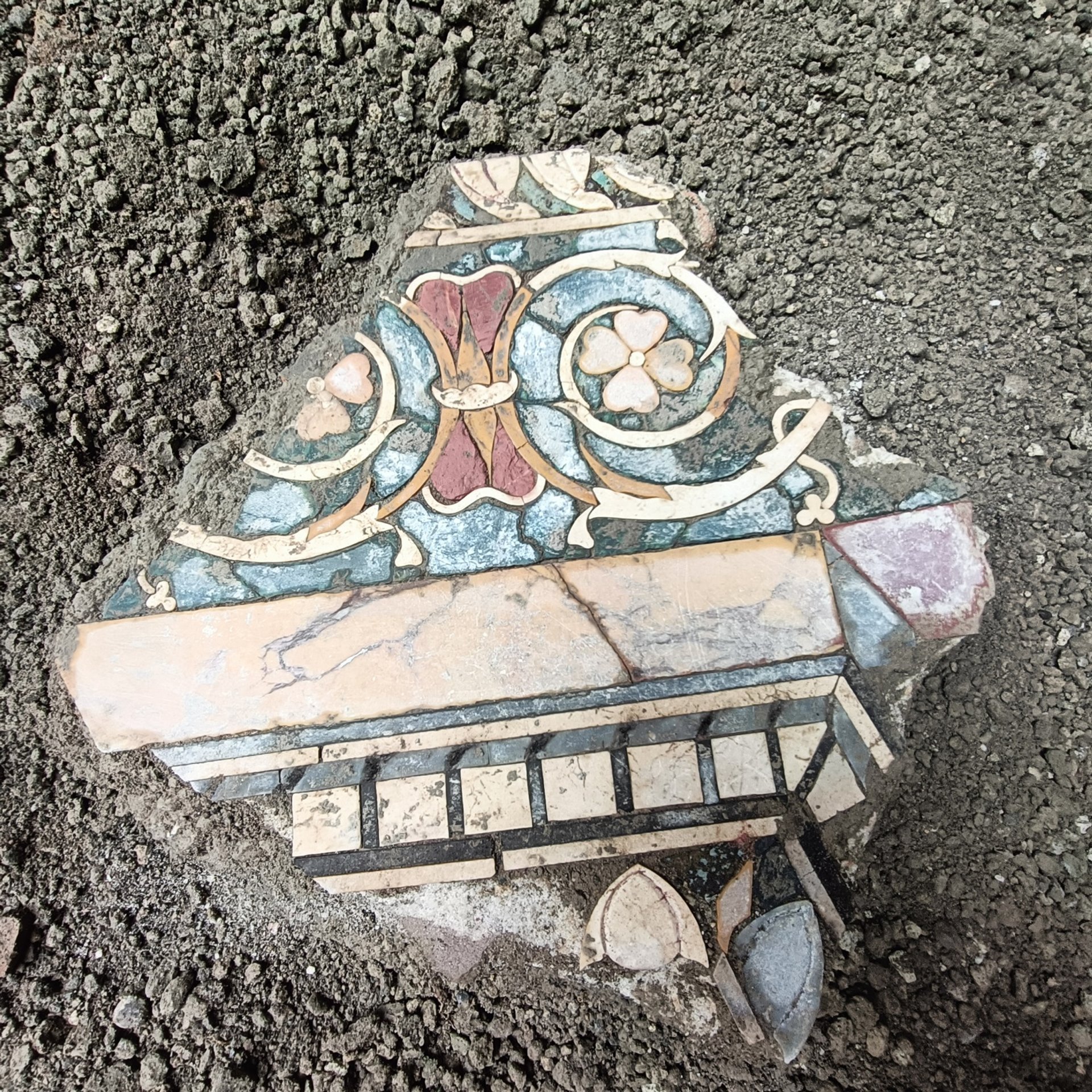
A piece of ceramic discovered during the excavations
Before the eruption, Pompeii had a population of 20,000. However, with two-thirds of the site currently excavated, only 1,300 victims have been recovered. Some residents may have died beyond the confines of the city as they fled, while some may have lived past the disaster.
“There were definitely survivors, as suggested by inscriptions with Pompeian names from other centres in Campania,” the researchers said in a press statement. “But clearly not everyone had the means to start a new life elsewhere. This could explain why some inhabitants returned to the destroyed city.”
They may have been joined by newcomers “with nothing to lose,” the researchers added, who built new lives amid the ruins. The land would have resembled a “desert”, the researchers continue, but over time, vegetation returned, making it possible to cultivate grain and produce bread once again.
Gabriel Zuchtriegel, the park’s director, added that, rather than a city, the reinhabited Pompeii resembled “a precarious and grey agglomeration… a favela among the ruins of the still recognisable Pompeii that once was”.
Buried treasures such as silver and gold coins and pearl necklaces became a valuable source of income for residents. “They began to dig to find precious materials, including marble that was sold,” Zuchtriegel said.
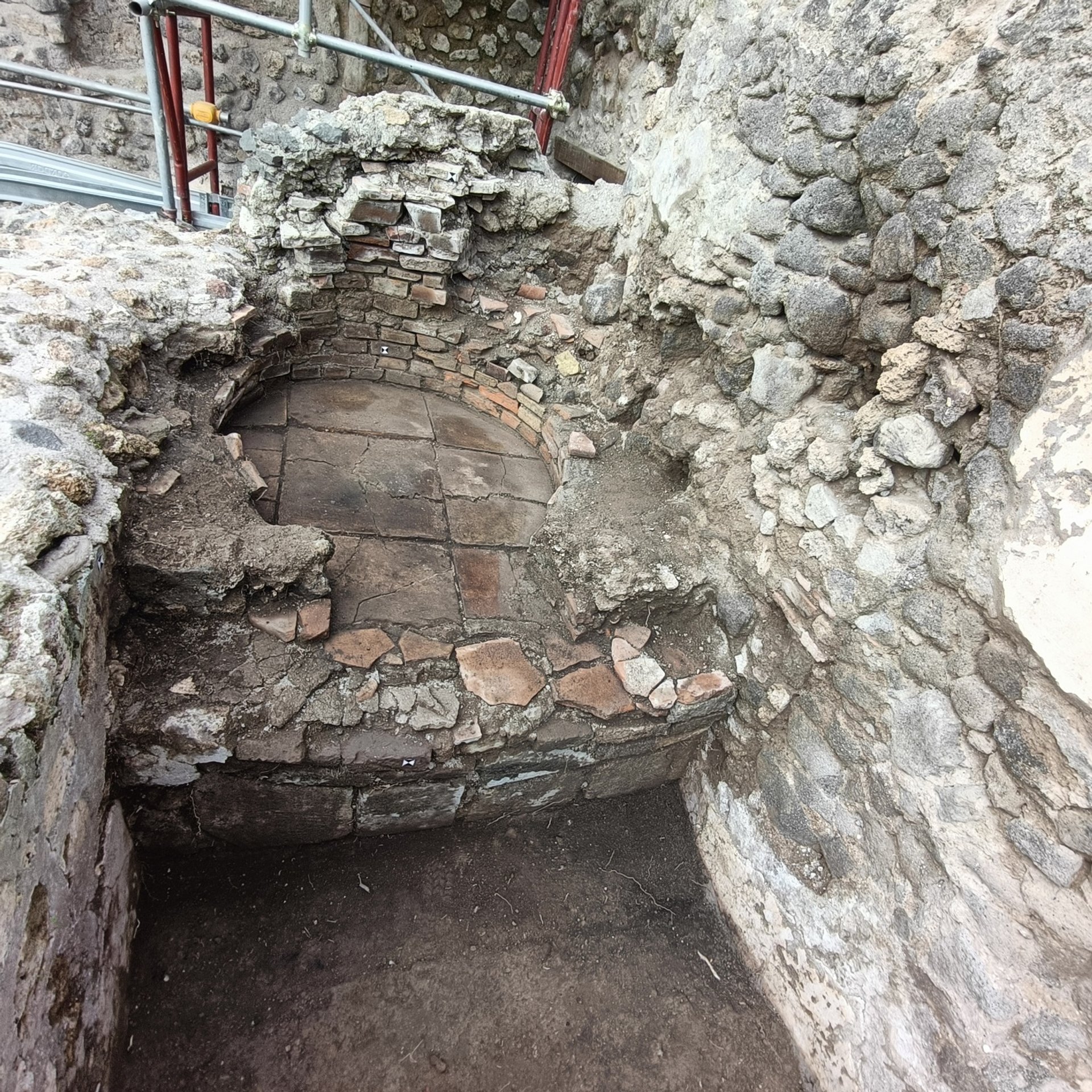
An oven that has been dated to after 79AD
Following the destruction of Pompeii, the Roman emperor Titus sent two former consuls there and to the town of Herculaneum, which was also buried in the eruption, to maintain order. Land left by victims without any heirs was redistributed to aid the development of ravaged cities. Even so, Pompeii never returned to the grand opulence of its heyday.
Inhabitants continued their “precarious and disorganised” lives without the usual services of a Roman town, the researchers suggest, until Vesuvius erupted again in 472AD and Pompeii was definitively abandoned.
Since major excavations began in the mid-18th century, researchers have uncovered lavish homes with vivid frescoes and opulent bathhouses. But Zuchtriegel said that, in their rush to reveal the site’s splendours, archaeologists had overlooked what he called the town’s “second Pompeii”—the period of resettlement.
“We are unearthing everything forgotten by history… everything that is removed or obliterated or remains hidden in the shadow of other things that are apparently more important.”



